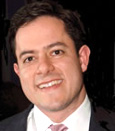 The East Side of Manhattan is at a critical juncture. The land use and infrastructure decisions we make today will affect the city for generations to come.
The East Side of Manhattan is at a critical juncture. The land use and infrastructure decisions we make today will affect the city for generations to come.
CON EDISON WATERSIDE PLANT
One of the biggest challenges facing the area is the future of a plot of land where the Con Edison Waterside Plant currently sits, between 38th and 40th Streets on First Avenue.
This parcel of land - approximately nine acres in total - represents the only existing developable space on the Manhattan side of the East River. It also presents an opportunity to act boldly in defense of open public space and for the creation of affordable housing.
Developer Sheldon Solow, who wants to create a series of buildings similar in size to the Chrysler Building and the Trump World Tower, recently purchased the land. As proposed, these buildings would include four million square feet of residential space and one million square feet of commercial space, with a plaza and ice skating rink in the center.
In order to accomplish this, the developers will need to ask the city to change the zoning regulation for this area. During this process, it will be the responsibility of local government to make sure that this development maximizes open public space, allows unencumbered access to the waterfront, and creates the affordable housing units that the city desperately needs.
We also need to think creatively about finding new areas for open space.
One proposal involves creating a deck over the FDR Drive that would connect 39th and 40th Streets to an esplanade along the East River. The Economic Development Corporation is studying the feasibility of such a deck. I, along with other local elected officials, have asked them to move expeditiously on the completion of this study.
BUILDING NEW TRANSPORTATION
The East Side also faces special infrastructure challenges - particularly in the area of transportation.
The Lexington Avenue subway line bears 40 percent of all subway riders in New York City, and is the busiest subway line in the nation. It is already taxed beyond its capacity. The infusion of tens of thousands of new residents in the proposed Con Ed redevelopment would push it well beyond its limitations.
Another plan for the future, known as East Side Access, will connect the Long Island Rail Road to Grand Central Station will also bring in approximately 28,000 people to the East Side every hour during rush hour. Half of those commuters will likely travel to other destinations in Manhattan, mostly using the already congested Lexington line.
In light of the development at the Con Edison site and the East Side Access proposal, construction of the long-awaited Second Avenue Subway line needs to be at the top of any transportation priority list.
Efforts to construct a new line on Second Avenue stalled during the city's fiscal crisis in the 1970s. But with the passage of the Transportation Bond Act in November, these efforts can finally start again. The time is right; we simply cannot delay any longer.
In the interim, I support creating dedicated bus lanes on First and Second Avenues as part of a "Bus Rapid Transit" system.
In such a system, each bus could be equipped with global positioning technology so that a dispatcher can monitor its distance from other buses, and instruct the driver to move faster or slower in accordance with their schedules. The same technology can be used to advise riders the amount of time they will need to wait before the next bus or subway arrives.
While not a complete solution, Bus Rapid Transit will help to alleviate the growing strain on East Side straphangers.
Thinking strategically about land use and transportation on the East Side also presents an opportunity for us to re-invigorate efforts to make better use of our waterfronts to move residents around - such as by expanding ferry service to lesser-served communities around the city.
Daniel Garodnick represents City Council district 4, which includes the neighborhoods of Midtown East, Murray Hill, Stuyvesant Town and the Upper East Side.
Â




